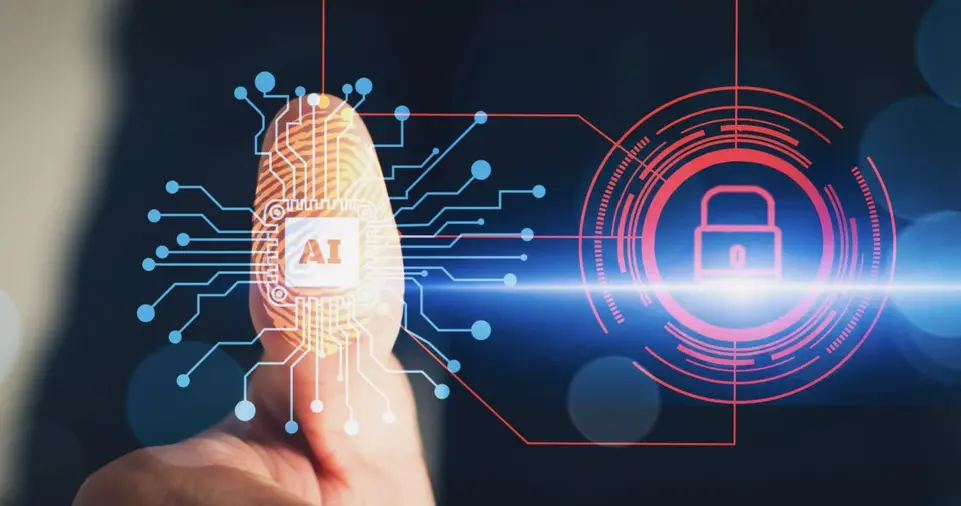In today’s digital-first world, businesses are increasingly reliant on technology to operate efficiently and serve their customers.
However, with this reliance comes a growing vulnerability to cyber threats. Cyberattacks are becoming more sophisticated, persistent, and damaging, putting sensitive data, customer trust, and business continuity at risk.
Traditional cybersecurity measures, while still important, are no longer sufficient to counter these evolving threats. This is where artificial intelligence (AI) comes into play.
AI-driven cybersecurity offers a proactive, adaptive, and intelligent approach to protecting digital assets.
By leveraging machine learning, predictive analytics, and automation, AI can detect and respond to threats faster and more accurately than traditional systems.
For businesses aiming to stay ahead of cybercriminals, integrating AI into their cybersecurity strategy is no longer optional—it’s essential.
This comprehensive guide will walk you through the step-by-step process of implementing AI-driven cybersecurity for your business, detailing everything from assessing your current security posture to integrating intelligent tools and maintaining compliance with industry regulations.
Understanding the Need for AI in Cybersecurity
The Evolving Threat Landscape
Cyber threats have evolved dramatically in recent years. No longer are businesses only dealing with basic viruses or phishing emails. Today, threats include ransomware attacks, zero-day exploits, advanced persistent threats (APTs), insider threats, and more.
These attacks are often orchestrated by well-funded, organized cybercriminal groups using advanced tactics.
In this constantly changing landscape, traditional security systems that rely on static rules and signature-based detection often fall short.
AI brings a dynamic solution by learning from data patterns and adapting to new threats in real time.
This means AI systems can detect anomalies that would be missed by conventional tools, respond to threats more rapidly, and even predict potential attacks before they happen.
Advantages of AI-Driven Cybersecurity
Implementing AI in cybersecurity offers several advantages. Firstly, AI enables real-time threat detection and response, reducing the time between detection and mitigation.
Secondly, it enhances accuracy by minimizing false positives, which can overwhelm security teams and lead to overlooked threats.
Thirdly, AI improves efficiency by automating routine tasks, allowing cybersecurity professionals to focus on more strategic issues.
Additionally, AI can analyze vast amounts of data far quicker than humans, making it ideal for threat intelligence and behavior analysis.
Lastly, AI systems can continuously learn and improve, ensuring your defense mechanisms evolve with the threat landscape.
For businesses, this means more robust, efficient, and future-ready cybersecurity.
ALSO READ:
Step-by-Step Implementation Guide

Step 1: Assess Your Current Security Landscape
Before integrating AI, it’s crucial to understand your existing cybersecurity framework. Begin with a comprehensive audit of your IT environment, including hardware, software, networks, cloud systems, and access control protocols.
Identify potential vulnerabilities, outdated systems, and areas lacking proper security measures. Also, evaluate the effectiveness of your current security policies, incident response plans, and employee awareness programs.
Understanding where your business stands in terms of cybersecurity readiness will help you identify the gaps that AI can fill.
This assessment should also consider the types of data you manage, regulatory requirements, and the potential impact of a security breach on your operations and reputation.
Step 2: Define Your Security Objectives
Clear objectives are the foundation of an effective AI-driven cybersecurity strategy. Determine what you aim to achieve with AI integration.
Common goals include enhancing threat detection capabilities, improving response time, automating repetitive tasks, strengthening endpoint protection, and ensuring regulatory compliance.
Tailor your objectives to your business’s specific needs, industry standards, and risk profile.
For example, a healthcare organization may prioritize data privacy and compliance with HIPAA, while a financial firm may focus on fraud detection and transaction security.
Setting precise, measurable goals will guide your choice of AI tools and help you track the effectiveness of your cybersecurity efforts over time.
Step 3: Choose the Right AI-Based Cybersecurity Tools
Selecting the right tools is a critical step in your AI cybersecurity journey.
There are numerous AI-powered solutions available, each designed for specific functions:
- AI-Powered Threat Detection Systems: Tools like Darktrace and Vectra use machine learning to analyze network traffic and identify unusual behavior that may indicate a cyberattack.
- Endpoint Protection Platforms (EPP): Solutions like CrowdStrike and SentinelOne offer AI-driven protection for endpoints such as computers, servers, and mobile devices.
- Malware Detection: Sophos Intercept X uses deep learning to detect known and unknown malware threats.
- Security Information and Event Management (SIEM): Tools like Splunk and IBM QRadar use AI to collect, analyze, and correlate security events from multiple sources, providing actionable insights.
- User and Entity Behavior Analytics (UEBA): These tools monitor user behavior to detect insider threats and compromised accounts.
Choose solutions that integrate well with your existing infrastructure, offer scalability, and provide comprehensive support and documentation.
Step 4: Automate Threat Response and Incident Management
One of the most powerful capabilities of AI in cybersecurity is automation. AI can significantly reduce response times by automatically identifying, investigating, and neutralizing threats.
This is particularly valuable in large organizations where security teams are often overwhelmed by the volume of alerts.
AI-driven Security Orchestration, Automation, and Response (SOAR) platforms streamline incident management by automating workflows, generating reports, and facilitating communication between teams.
For example, when an intrusion is detected, an AI system can automatically isolate affected devices, block malicious IP addresses, and alert the security team.
This level of automation not only mitigates damage but also ensures a consistent and timely response to security incidents.
Step 5: Implement AI for Data Protection
AI can play a vital role in protecting sensitive data. Through predictive analytics and behavior analysis, AI can detect unusual data access patterns, prevent unauthorized transfers, and alert administrators to potential breaches.
Data Loss Prevention (DLP) systems enhanced with AI can identify and block suspicious activities in real-time, reducing the risk of data leaks.
Additionally, AI can strengthen encryption processes by dynamically adjusting encryption keys and protocols based on threat levels.
By leveraging AI, businesses can enforce stricter access controls, monitor file movements, and ensure that data integrity and confidentiality are maintained at all times.
Step 6: Establish Continuous Monitoring and Threat Intelligence
Cybersecurity is not a one-time setup but an ongoing process. AI enables continuous monitoring of your entire IT ecosystem, providing real-time insights into network health, user activity, and potential threats.
Implement tools that use machine learning algorithms to detect anomalies, prioritize risks, and recommend actions.
Furthermore, AI-driven threat intelligence platforms aggregate data from global sources, analyze trends, and provide timely updates about emerging threats.
This helps businesses stay ahead of cybercriminals and adjust their defense strategies proactively.
Continuous monitoring also supports compliance reporting and audit readiness by maintaining a detailed record of all security events and responses.
Step 7: Integrate AI with Existing Security Infrastructure
For AI to be effective, it must seamlessly integrate with your current security systems.
This includes firewalls, intrusion detection/prevention systems (IDS/IPS), identity and access management (IAM) platforms, and cloud security tools.
Integration ensures that data flows smoothly between systems, enabling holistic threat detection and coordinated response.
Collaboration between your IT and cybersecurity teams is essential during this phase.
They should work together to configure settings, define protocols, and ensure compatibility across platforms. Proper integration not only maximizes the value of AI tools but also enhances your overall security architecture.
Step 8: Conduct Employee Training and Awareness Programs
Employees are often the weakest link in cybersecurity. AI can help by facilitating targeted training programs and simulations.
For example, AI-powered phishing simulators can mimic real-world scenarios and track employee responses to assess their vulnerability.
Based on the results, personalized training can be provided to strengthen awareness and preparedness. Additionally, educating employees about the role of AI in cybersecurity can increase trust and cooperation.
Ensure that staff understand the importance of data security, follow best practices, and know how to report suspicious activities. A well-informed workforce acts as the first line of defense against cyber threats.
Step 9: Regularly Test, Update, and Improve
Cyber threats are constantly evolving, and so should your defense mechanisms. Regularly conduct vulnerability assessments, penetration tests, and red team exercises to evaluate your AI systems’ effectiveness.
Use the insights gained to refine your algorithms, update threat databases, and adjust your security policies. AI models thrive on data; the more relevant and recent the data, the better the performance.
Establish a feedback loop where incidents and outcomes are analyzed to improve future responses.
Continuously updating your systems ensures that your cybersecurity framework remains agile, adaptive, and resilient against emerging threats.
Step 10: Ensure Regulatory Compliance and Ethical Use of AI
AI in cybersecurity must align with legal and ethical standards. Depending on your industry and location, you may be subject to regulations such as GDPR, HIPAA, CCPA, or PCI DSS.
Ensure that your AI tools are configured to support compliance requirements, such as data encryption, audit trails, and access controls.
Moreover, address ethical concerns by ensuring transparency in how AI decisions are made, mitigating bias in algorithms, and maintaining accountability.
Document your AI implementation process, including data sources, decision-making criteria, and risk mitigation strategies.
Being compliant and ethical not only protects your business from legal repercussions but also builds trust with customers and stakeholders.
Step 11: Partner with AI Cybersecurity Experts
Finally, consider collaborating with cybersecurity firms that specialize in AI solutions.
These experts bring valuable experience, resources, and insights that can accelerate your implementation process and improve outcomes.
They can help you select the right tools, customize solutions to your business needs, and provide ongoing support.
Whether you opt for a fully managed service or a hybrid model, having expert guidance can make a significant difference in the success of your AI-driven cybersecurity strategy.
As threats grow in complexity, professional support ensures you remain vigilant, responsive, and secure in an increasingly digital world.







